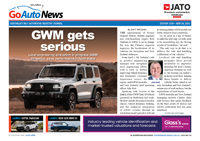 Super Test Super Test
Car reviews - Mazda - CX-5 - 5-dr wagon
OverviewThe excellent Mazda CX-5 sets a new compact SUV benchmark27 Feb 2012 WHY are ‘compact’ SUVs generally so samey and inferior to drive compared to their small-car counterparts? Since the sassy CX-7 arrived in late 2006 Mazda alone seemed to have happily bucked that trend, creating one of the few enjoyable crossovers under $50,000. Now, though, its cheaper, shorter and more upright CX-5 successor has surfaced, with intent to ‘hit the SUV sweet spot’ according to Mazda – and that sounds an awful lot like a threat to bore us. But we needn’t have worried because once again Mazda has shown us how to do an SUV with style. Gallery Click to see larger images Model release date: 1 February 2012 to 1 January 2015
Previous model CX-7Released: November 2006 Ended: February 2012 Family Tree: CX-5WHAT a brash and bold breath of fresh air the CX-7 was – and still is really – in what is generally a staid and conservative class. Larger, longer and more expensive than the vanilla Tribute (2001-2008) that it eventually replaced, the CX-7 was pitched as a high-performance SUV flagship, and came with plenty of go to match the head-turning show. Cribbed from the stealthy Mazda6 MPS AWD of the time, the drivetrain boasted a 175kW/350Nm 2.3-litre direct-injection turbocharged four-cylinder petrol engine, driving all four wheels via a six-speed automatic transmission. Initially offered in base and Luxury guises, the only thing higher than the generous equipment levels was the fuel consumption – an issue that saw this otherwise sure-fire hit struggle at a time when petrol prices were sky-high. Minor equipment changes occurred during mid-’07, but it wasn’t until the Series II arrived in October ’09 that the CX-7 really broke through, thanks to a new base front-wheel-drive Classic powered by a variation of Mazda’s trusty 120kW/205Nm 2.5-litre four-cylinder naturally aspirated petrol unit (mated to a five-speed auto) and a well-received 127kW/400Nm 2.2-litre four-cylinder turbo-diesel – although its lack of an auto option hindered its market potential. |
 Super Test Super Test
Click to share
GoAuto can help you buy a new CX-5 Customer Terms and Conditions – New Car Lead enquires
Agreement
This is an agreement between GoAutoMedia Pty Limited ACN 094 732 457 of PO Box 18, Beach Road, Sandringham, VIC, 3191 (“we/us”), the owner and operator of the GoAuto.com.au website (“the website”) and the person wanting GoAuto.com.au to provide them with a lead for the purchase of a new car (“you”).
By completing a New Car Lead Enquiry, you agree to the terms and conditions and disclaimers and acknowledge the policies set out below.
Terms and Conditions
- In order for us to effect a lead you must you must complete a New Car Lead Enquiry (“Enquiry”).
- We will call you as soon as possible after you complete the Enquiry and certainly no later than the next business day. When we call, we will discuss with you your new car requirements.
- You consent to our passing on the Enquiry and your requirements to an appropriate authorised motor car dealer as a lead.
- We will contact you again in approximately eight days following your initial enquiry to check on the progress of the Enquiry.
- While we will provide the dealer with the Enquiry and details of your new car requirements, we take no responsibility for what happens after passing on that material as a lead.
- You acknowledge that we are a new car information service providing new car editorial information, pictures and prices to our customers as a guide only. Any new car prices published on the website are the manufacturers’ recommended retail prices and do not include delivery charges and on-road costs. Any authorized motor car dealer to which we pass on your Enquiry as a lead will provide you with full details of the price at which the vehicle will be sold to you.
- You acknowledge that we do not sell motor vehicles. Any sale of a new car to you by a dealer after we have passed on your Enquiry to that dealer as a lead, is a sale by that dealer not by us.
Privacy Policy– New Car Lead Enquires
- We take privacy very seriously. We understand that you will only complete an Enquiry if you can trust us to protect your personal information and use it appropriately. Our policy is to ensure that the personal information collected when you make an Enquiry is only used for the purposes of connecting you with an authorised motor car dealer.
- We do not on-sell information collected from you or any other customer.
- From time to time, we may email you with information or promotions that may be relevant for car buyers. You will continue to receive communications from us unless you tell us that you do not want to receive any advertising or promotional information in the future by unsubscribing from these communications.
closeCX-5 pricingGT AWD Maxx Maxx AWD Maxx Sport Maxx Sport AWD Touring AWD
Motor industry news GoAutoNews is Australia’s number one automotive industry journal covering the latest news, future and new model releases, market trends, industry personnel movements, and international events. |
Facebook Twitter Instagram